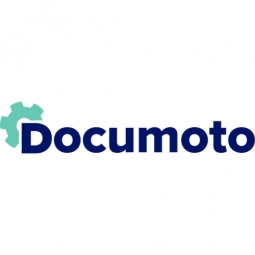Customer Company Size
Mid-size Company
Region
- America
Country
- United States
Product
- Bull Hog
- Fecon’s forestry attachments
- Fecon’s chippers
- Fecon’s hydraulic power packs
- Fecon’s track-driven and wheeled tractors
Tech Stack
- Documoto
- Fecon Connect
Implementation Scale
- Enterprise-wide Deployment
Impact Metrics
- Productivity Improvements
- Cost Savings
- Revenue Growth
Applicable Functions
- Sales & Marketing
Use Cases
- Inventory Management
Services
- Software Design & Engineering Services
About The Customer
Fecon is a manufacturer of premium products in the forestry industry. Their flagship product is the Bull Hog, a mulching head that is available for a wide variety of applications and vehicles. In addition to the Bull Hog, Fecon makes track-driven and wheeled tractors for mulching and utility work, forestry attachments, chippers, and hydraulic power packs. They apply advanced design technology and materials to create a range of tools, which are all built at Fecon’s facilities in Lebanon, Ohio. Fecon fosters long-term relationships by providing the highest level of customer care possible, in alignment with their corporate vision and values.
The Challenge
Fecon, a manufacturer of premium products in the forestry industry, was facing challenges with its parts catalogs. The catalogs were dependent on a third-party vendor, who converted product information from the manufacturer into parts books and manuals. This process was time-consuming and costly, with each manual costing almost $10,000. The lengthy turnaround time meant parts catalogs were effectively obsolete as soon as they were published. There was no effective way to update manuals in response to engineering changes and product updates. This resulted in extensive phone time with Fecon customer service simply trying to identify the correct parts for a customer’s machine. Fecon wanted to improve dealer and customer communications by providing timely service bulletins, warranty notifications, sales promotions and other vital information for equipment owners.
The Solution
Fecon decided to improve its technology to reap more long-term benefits and have a greater impact on the company’s overall performance. They focused on improving online capabilities and considered a SaaS solution to lower upfront costs and provide more flexibility. They chose Documoto, an out-of-the-box solution that matched their vision for customer support. The Documoto Professional Services team worked alongside Fecon’s publishing, engineering and information technology staff to guide the implementation process. After Fecon’s cloud environment was configured and the publishing staff attended Documoto training, they began the process of migrating parts data and illustrations into the new system. Fecon’s aftermarket portal, Fecon Connect, was rolled out to the entire dealer network after a 90-day period of publishing and testing.
Operational Impact
Quantitative Benefit

Case Study missing?
Start adding your own!
Register with your work email and create a new case study profile for your business.
Related Case Studies.

Case Study
Hospital Inventory Management
The hospital supply chain team is responsible for ensuring that the right medical supplies are readily available to clinicians when and where needed, and to do so in the most efficient manner possible. However, many of the systems and processes in use at the cancer center for supply chain management were not best suited to support these goals. Barcoding technology, a commonly used method for inventory management of medical supplies, is labor intensive, time consuming, does not provide real-time visibility into inventory levels and can be prone to error. Consequently, the lack of accurate and real-time visibility into inventory levels across multiple supply rooms in multiple hospital facilities creates additional inefficiency in the system causing over-ordering, hoarding, and wasted supplies. Other sources of waste and cost were also identified as candidates for improvement. Existing systems and processes did not provide adequate security for high-cost inventory within the hospital, which was another driver of cost. A lack of visibility into expiration dates for supplies resulted in supplies being wasted due to past expiry dates. Storage of supplies was also a key consideration given the location of the cancer center’s facilities in a dense urban setting, where space is always at a premium. In order to address the challenges outlined above, the hospital sought a solution that would provide real-time inventory information with high levels of accuracy, reduce the level of manual effort required and enable data driven decision making to ensure that the right supplies were readily available to clinicians in the right location at the right time.

Case Study
Hardware Retailer Uses Data Warehouse to Track Inventory
Ace tracked which products retailers ordered, when they were ordered and shipped. However, the company could not track or forecast actual sales. Data used for reporting was up to a one-week old, owing to performance and data cleansing issues. Requirement to integrate wholesale and inventory data with POS data to help drive key business decisions, improve category management, lower inventory costs and optimize pricing. Reliance on custom coding to integrate POS data was excessively resource intensive and led to major performance constraints.

Case Study
Remake Enterprise-to-production System
The client was running a legacy material flow tracking system and wanted to replace the system with a more effective one as the system was increasingly expensive to maintain and support and also was not extendable. The client's IT landscape was filled with modern applications and it was difficult to interface the material flow tracking system with modern applications.

Case Study
Expertech - Capital Tool Inventory
Costly tools used to splice fiber optic cables are an important part of Expertech’s operational and capitalized expenses, but the company did not have an automated system in place to track their tools and optimize their usage. The existing data in its tracking system was inaccurate and required manual updating, making it essential for the company to implement an efficient process to track and follow up on its capital tool inventory.









